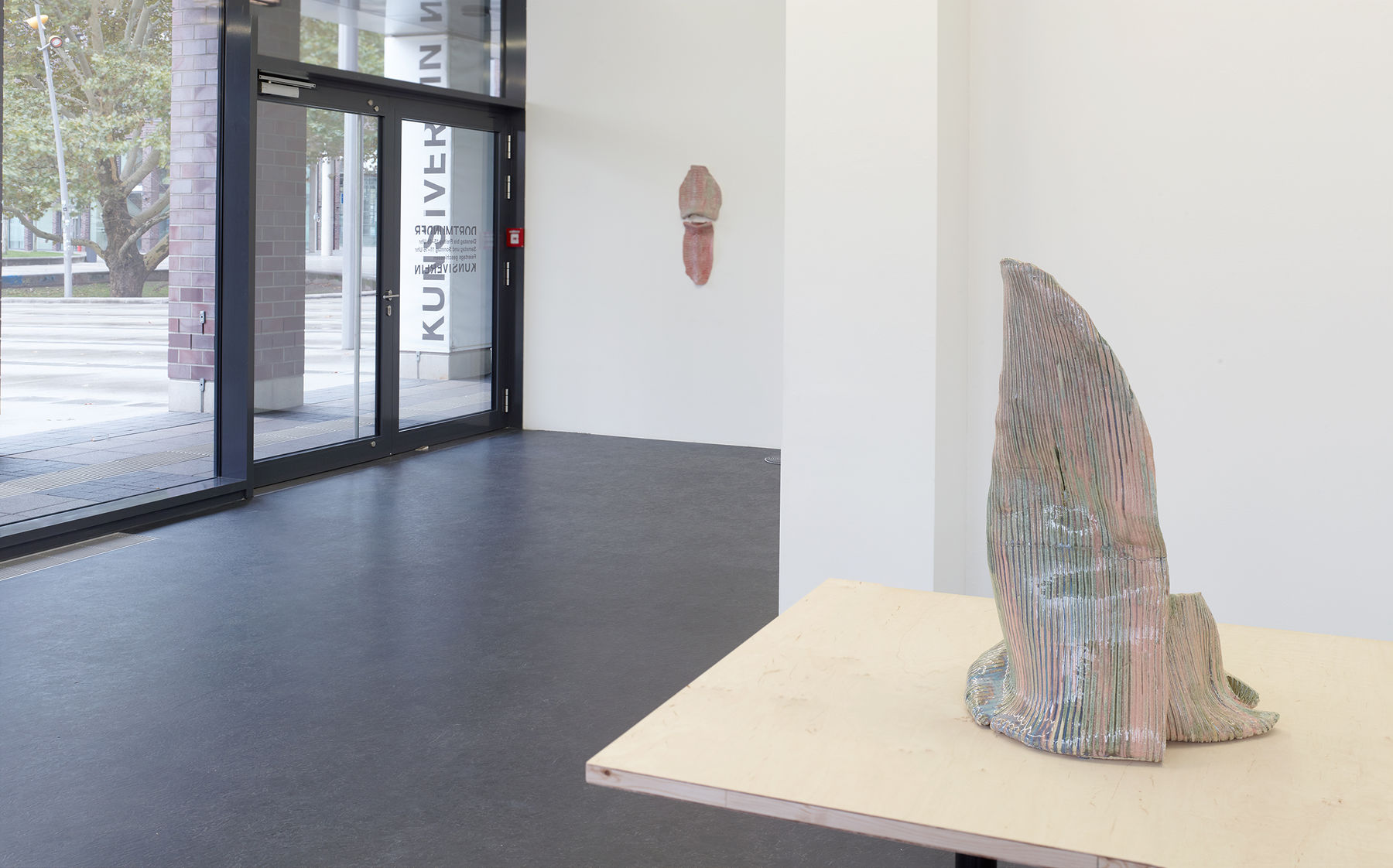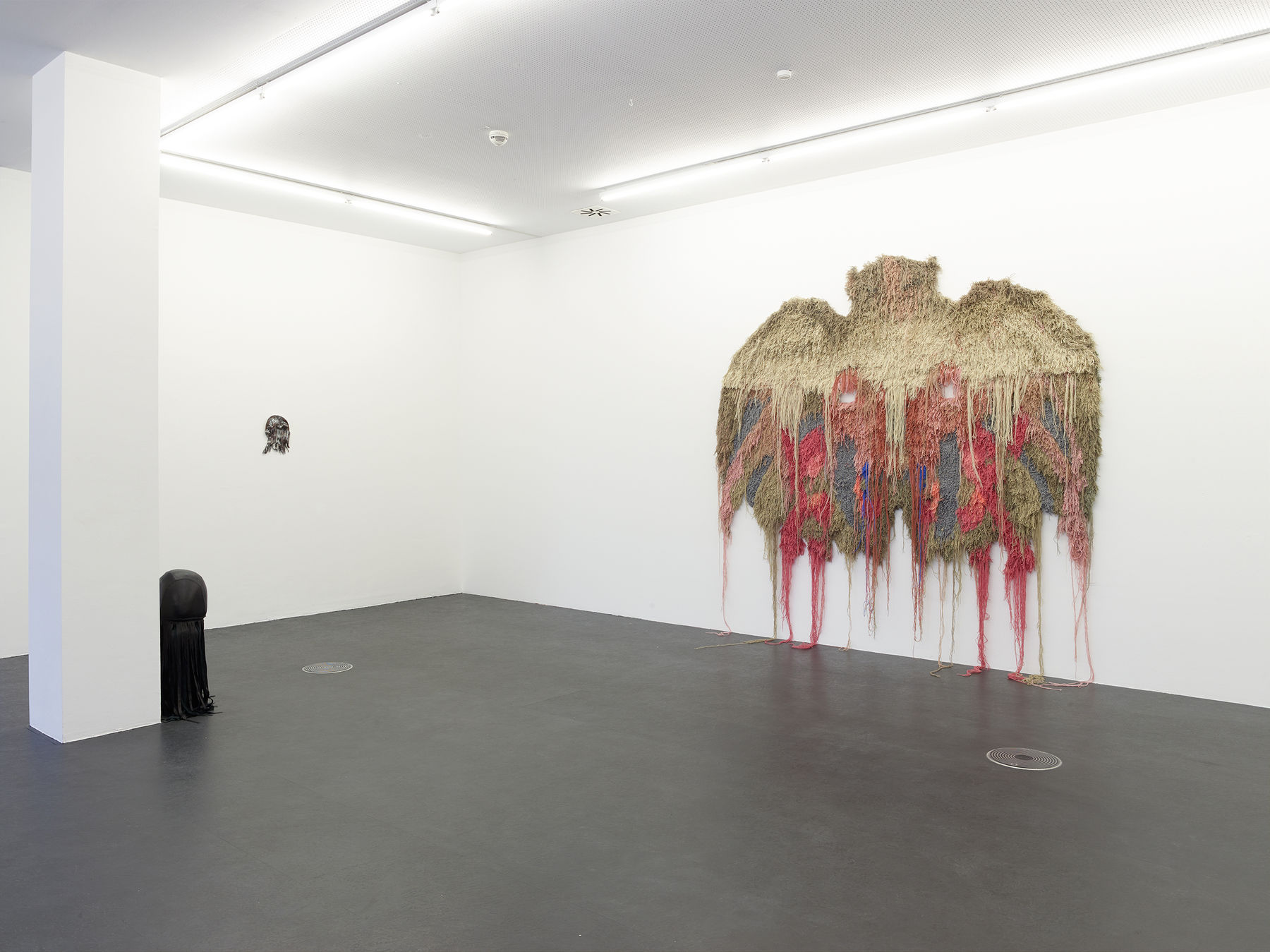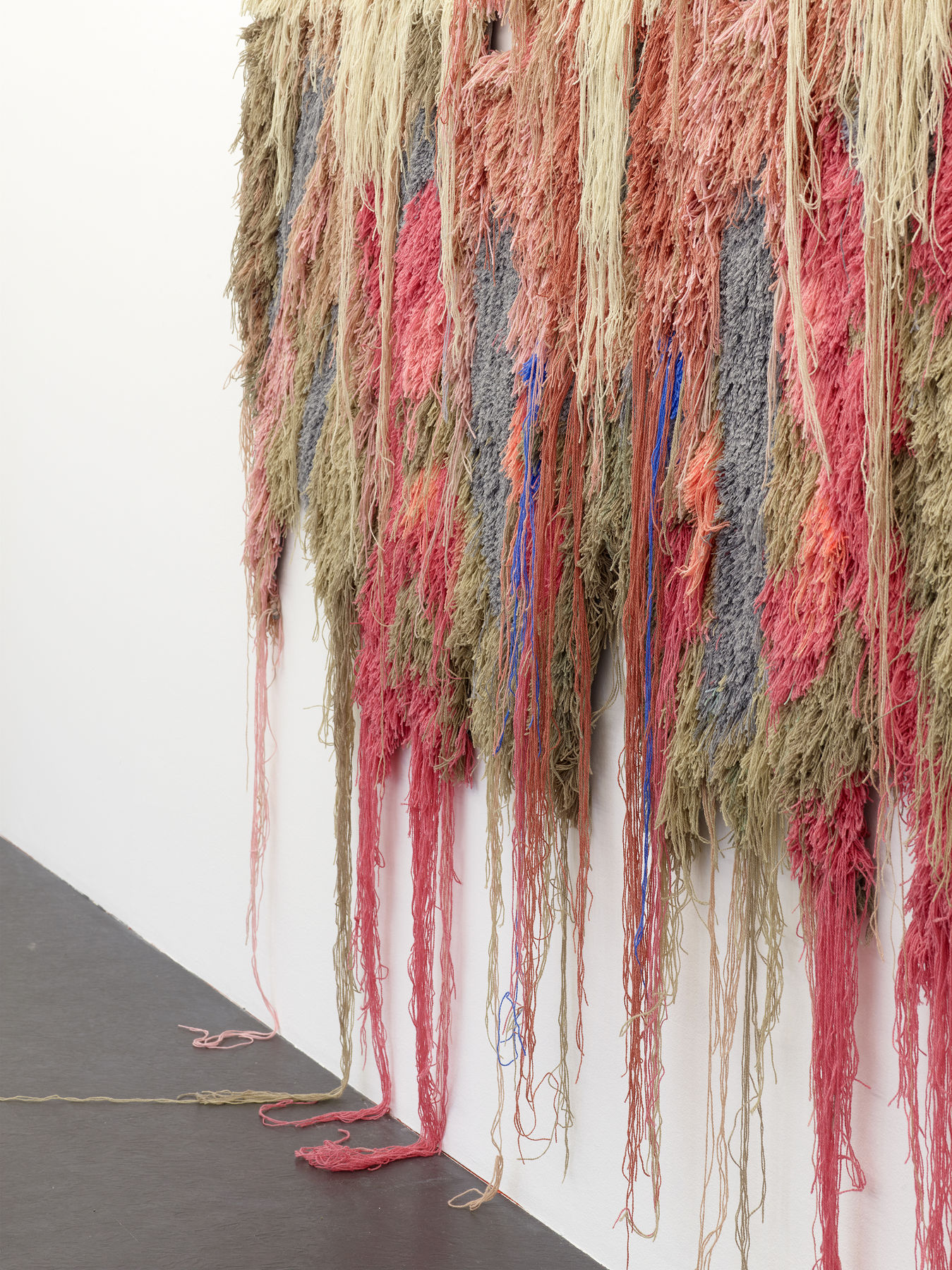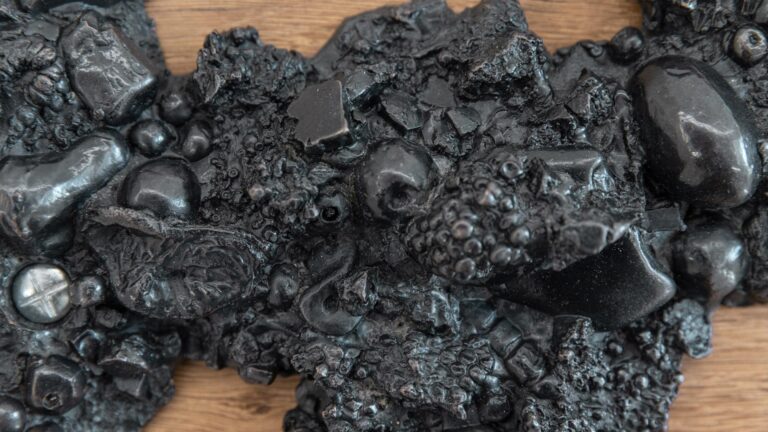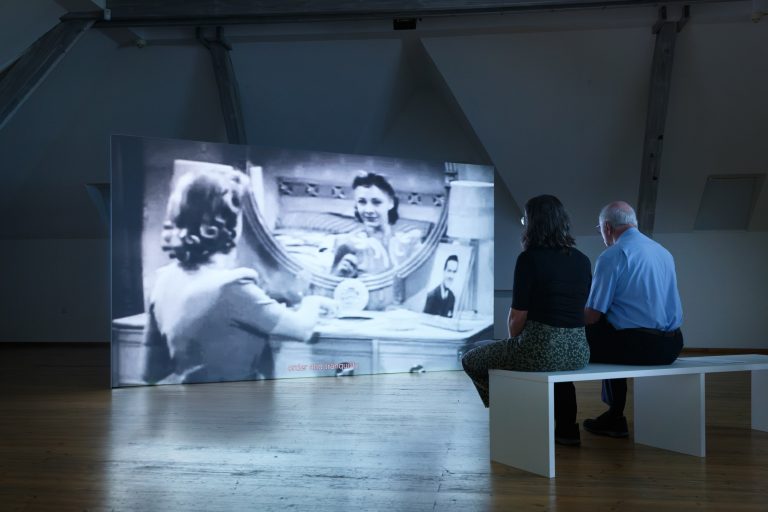Artist: Caroline Achaintre
Exhibition title: Dissolver
Curated by: Oriane Durand and Linda Schröer
Venue: Dortmunder Kunstverein, Dortmund, Germany
Date: September 21 – November 18, 2018
Photography: Simon Vogel / all images copyright and courtesy of the artists and Dortmunder Kunstverein
Note: Exhibition plan can be found here
With this exhibition, London-based artist Caroline Achaintre (*1969 in Toulouse, France) receives her first institutional solo exhibition in Germany.
After training as an ornamental blacksmith, Achaintre decided to study fine arts: first in Halle, where she continued to work primarily in metal, afterwards moving to London to study at Chelsea College of Arts and Goldsmiths University. This marked the beginning of her engagement with everyday materials and aspects of artisanship – not craft for its own sake, but as means to implement her artistic goals and ideas.
Within her colorful tapestries and ceramics, her aim is not to reach technical perfection, but rather to explore the field of tension between figuration and abstraction. The point of departure for her research is a distinct interest in the uncanny as it relates to Freud, as well as in the monstrous as an expression of psychic states.
Masks, animals, body parts, garments and everyday objects function as leitmotifs. Achaintre draws inspiration for her work from a wealth of images whose origins lie in post-modern design, record covers, high- and popular culture, masks of all sorts, and art history – in particular, German Expressionism.
She often combines different motifs with one another, for example an animal with a human face. The work Bat-8, for example, merges and overlaps a bat and an octopus, coexisting to shape a tapestry; moreover, within its furry surface one can also perceive a pink skull or a shaman wearing an animal bonnet. These hybrid characters are thus reminiscent of creatures of Surrealism, like those of Max Ernst, but also of optical illusions and Rorschach tests.
Associations are also provoked by the blurriness of the contours. The artist uses a tufting technique in her tapestries, where wool thread is poked through the back of the canvas with a pistol-like machine. Due to the differing length of the threads and their elasticity, the soft fibers mix and create a relief-like surface where lines and colors bleed into one another. The more indistinct the lines, the more chimeric the works appear. This effect already becomes apparent in the exhibition title, Dissolver, referencing the programmatic disappearance of borders.
The use of wool also leads to irritation in other ways: in her tapestries, Achaintre depicts organic forms, whereby the wool often personifies almost identical materials: hair, skin and fur. This use of materials which converge with the depicted, causing signified and signifier to interfere, can be found in all the tapestries exhibited here. In the work Neptune, for instance, the wool forms the face of a male figure and accordingly seems to grow out of the surface like ‘real’ hair of a beard. One can never be entirely sure of what they’re seeing.
Achaintre likes to play with ambivalences. These are notably encountered if one attempts to link her work to a specific medium: are these pictures painted with thread, two-dimensional sculptures hanging on the wall, or reliefs? The ceramics, ghostly in appearance but also seeming to depict headpieces, are made out of thin layers of clay, appearing hard due to their material but appearing soft due to their shape. Via material treatment and design, dead matter transforms into something alive. Thus, the works have a strong sensual character and seduce us to touch them, to caress them, or even to dive into them symbolically.
Between plush toy and black magic, familiarity and alienation, simplicity and exaggeration, Caroline Achaintre’s works create a world fraught with tension where expression knows no fear and no bounds.




